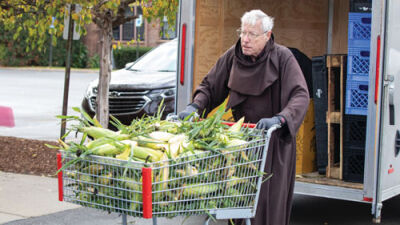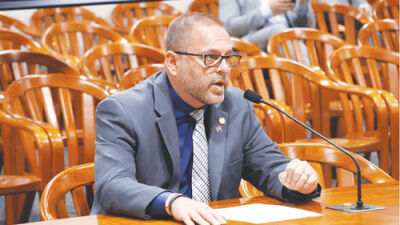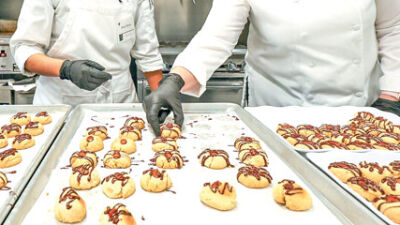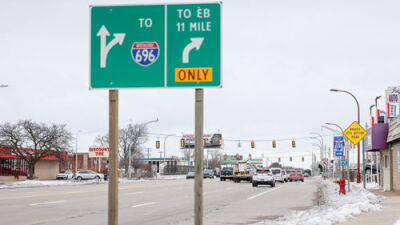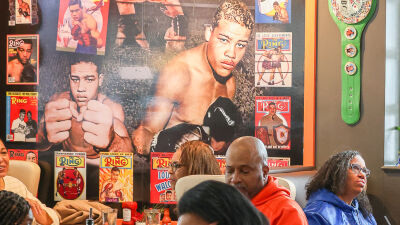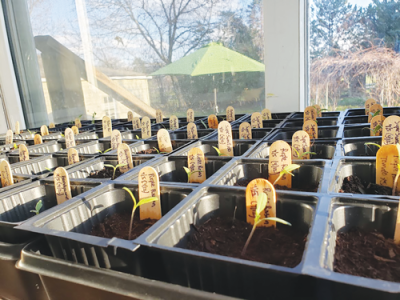
Kerr advised that people should buy labels, too, to help distinguish the different seeds.
Photo by Brian Louwers
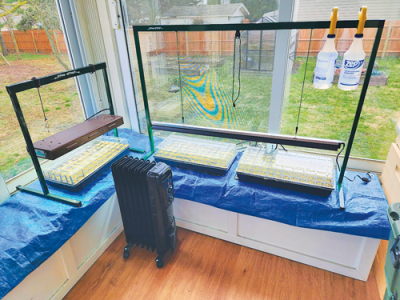
A basic list of starting supplies includes the seeds themselves, seed starting mix, cell packs or small containers and pots, and a light, as you need more than sunlight from a window, according to Lindsey Kerr, a consumer horticulture educator with Michigan State University Extension’s Wayne County Office.
Photo by Brian Louwers
METRO DETROIT — The weather in Michigan remains brisk, but the spring tides soon will bring about sunnier days in the Mitten State.
As the sunnier weather hits, people will be able to begin more outdoor activities, including growing and maintaining vegetables and flowers. But to get started now inside their own home, gardeners often get involved in seed starting.
When it comes to getting ready with seed starting, Rachel Zorn, a sales associate with Piechnik’s Greenhouse & Garden Gate, said the prospective planter needs to think about their own likes and interests with growing and whether they lean more into vegetables or flowers.
Once they do that, Zorn said, they can go out and select the seeds they’ll be using.
“There are a lot of different seeds on the market,” she said. “Some of them are treated seeds. Some of them are non-GMO. There’s pretty much anything that you could want out there that would fit with what you are looking to do and what your comfort level would be. Once you have the seeds themselves, then you’re going to need a tray for starting the seeds in, usually something that’s got fairly small compartments to start with.”
Zorn said a lot of new gardeners are interested in growing their own vegetables, which leads to their interest in starting seeds.
“They’re looking at that as a way of connecting with nature, a way of supplementing their own produce at home,” she said. “Vegetables can be a very easy first thing to get started with. They generally germinate fairly quickly and with a good percentage of success.”
The packaging the seeds come in will come with instructions on how quickly they germinate and can give an indication of the farmer’s timing for planting seeds, according to Zorn.
This helps let the farmer know when the last frost in their area would be, as plants are very susceptible to weather.
“Anything that started in the house — you do want to have that bright sunny window — but you also want to have a plan in mind for transitioning them outdoors so that they can start to harden off before they’re truly planted outside,” she said.
A basic list of starting supplies includes seeds, seed-starting mix, cell packs or small containers and pots, and a light, as you need more than sunlight from a window, according to Lindsey Kerr, a consumer horticulture educator with Michigan State University Extension’s Wayne County Office. The light can be a LED light. A heat mat also can improve germination rates, but it isn’t necessary.
Kerr believes the variety of what people can do in seed starting leads them to start their involvement.
She said that concerns involving pesticides in plants and vegetables lead people to start seeds as well.
“When they grow them themselves, they know there are no pesticides applied,” she said. “It’s just fun. A lot of people say it’s therapeutic or it gives them something to look forward to. You plant those seeds, and you end up staring at the soil every day, waiting for them to come up. So there’s that excitement and anticipation. And then sometimes there’s cost savings, too. You buy a bag of seeds or a package of seeds, and that can cost less than one single plant. So cost is definitely something people think about.
“When you grow things at home, they have so much more flavor. And so that’s really exciting for people,” Kerr added. “They realize they’ve never had such good tomatoes before and cucumbers. So it can be satisfying or exciting and kind of open up this whole new world of food to people.”
Kerr is active in seed-starting herself, having both a home garden and an office garden where she grows vegetables, which she both keeps and donates to the Women, Infant and Children federal assistance program. She also teaches seed-starting workshops around Wayne County.
Kerr said there is an initial investment in seed starting, but overall, it’s not a hard hobby to get into. She advised that people should buy labels, too, to help distinguish the different seeds.
“The main thing is that you have to be paying attention,” she said. “If you go on vacation, that’s not going to work. Your seeds are going to die from lack of water. But if you’re there, you’re present, then I think it’s pretty easy and it can be a lot of fun.
“You can start seeds, like snap peas, and you can plant them outside in your garden right now and they’ll come up and they’ll kind of do their thing, and that’s very hands off and that’s very easy,” she continued. “But when you start tomatoes inside, that’s a little bit more involved.”
Kerr said there is something satisfying about starting a seed and bringing a plant all the way to harvest, whether it’s a vegetable or a flower.
“It’s pretty incredible to take this little, tiny thing — it’s like a speck — and … it grows and … maybe it becomes a pumpkin, or it becomes a zinnia. It’s just incredible to watch that whole experience and think ‘I did that.’”
Zorn said people often are looking for a connection with nature, which leads to seed starting.
“That gratification of being able to start something from a tiny little seed and get it all the way to a plant that could be producing beautiful flowers or actually producing food items,” she said.
 Publication select ▼
Publication select ▼


